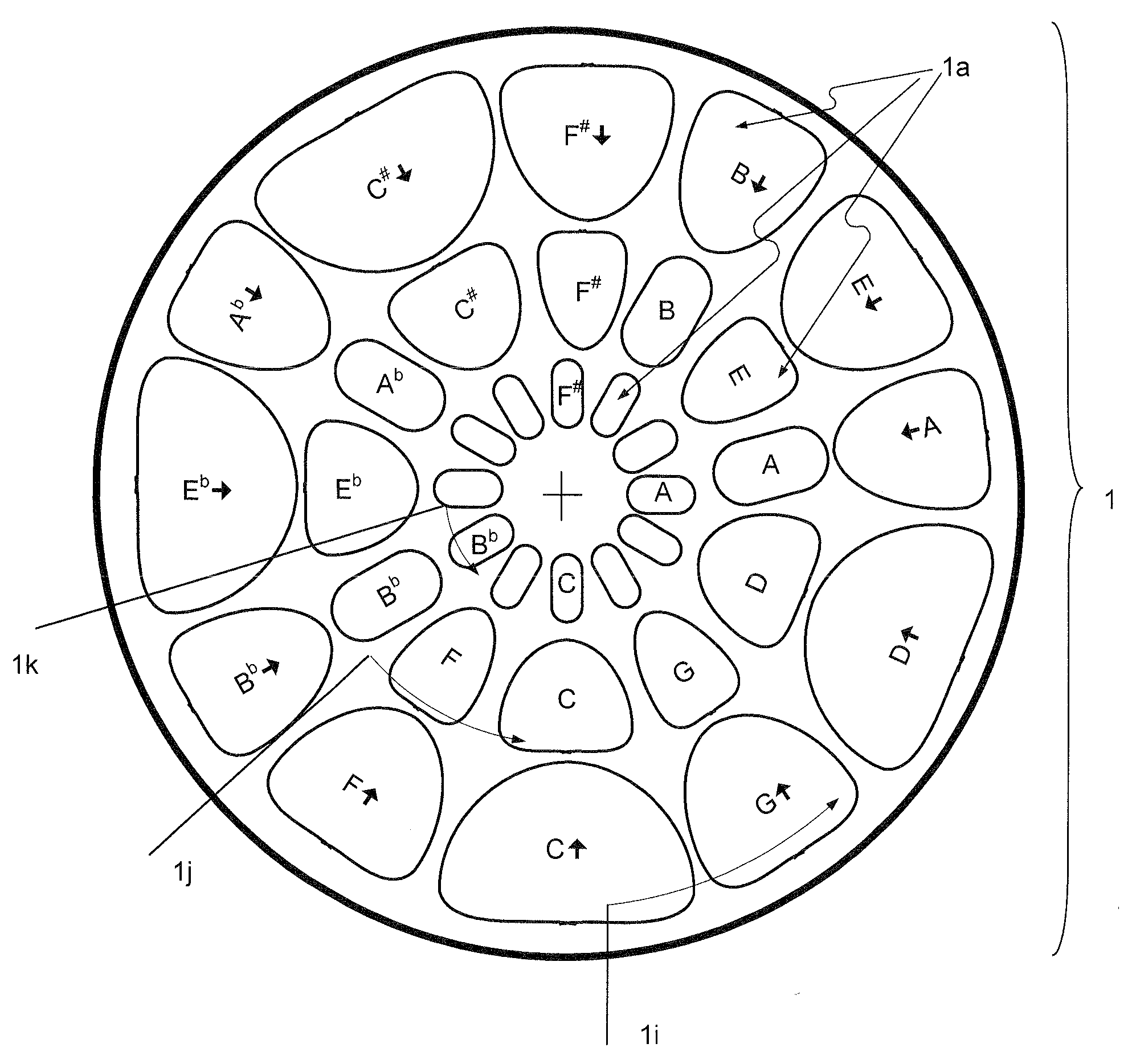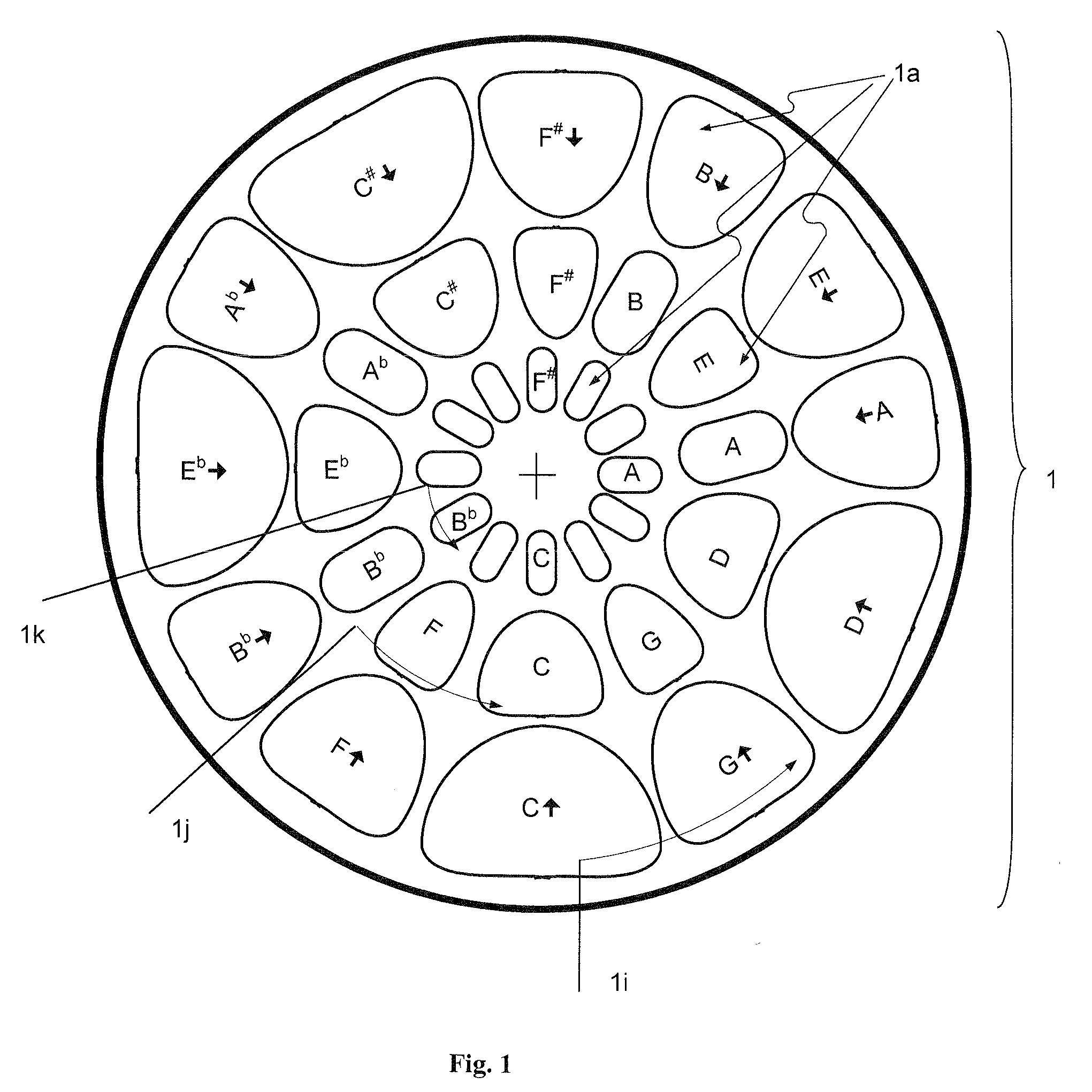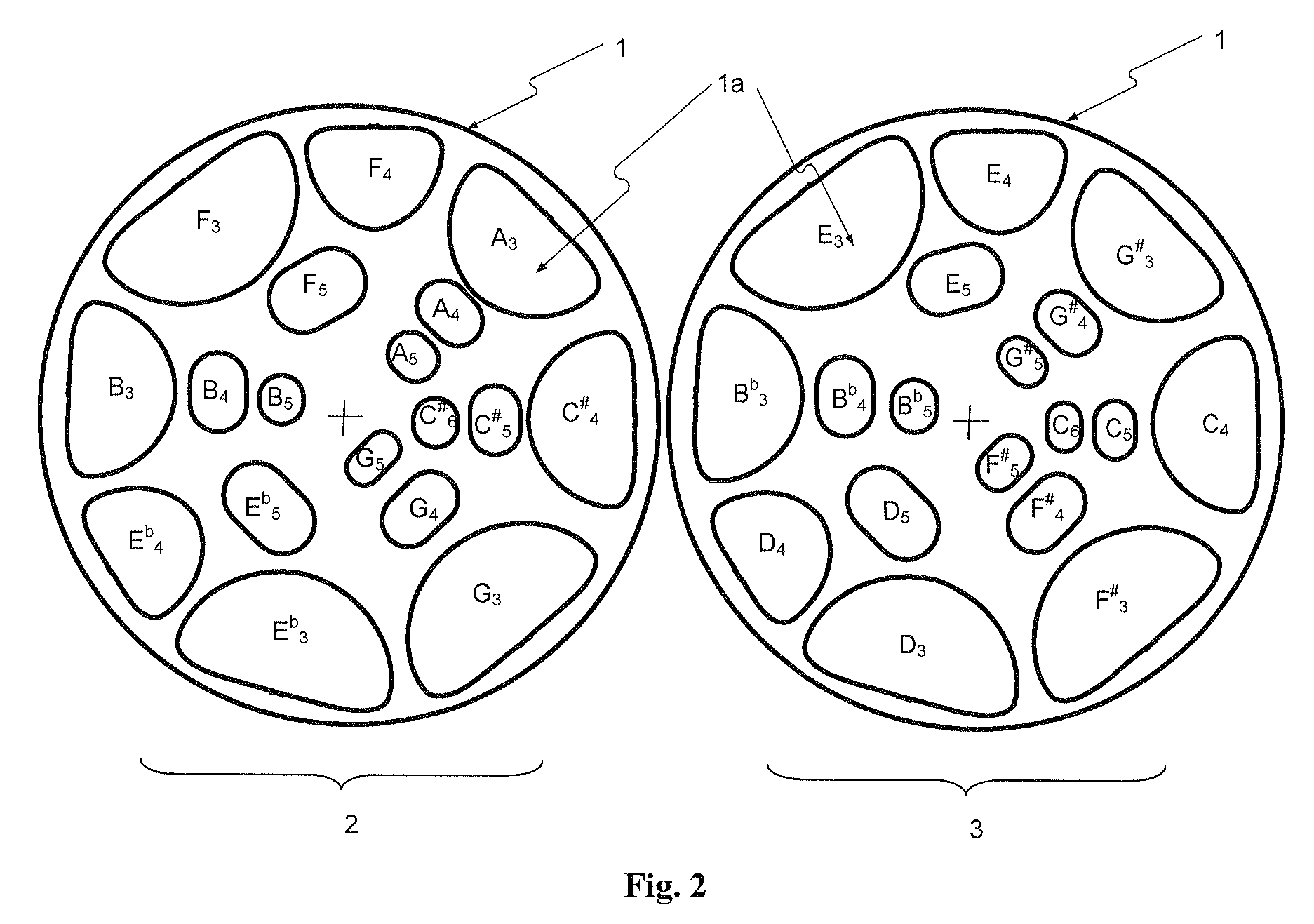If the material used is too hard, the sound produced tends to become dissonant and harsh.
If the material used is too soft, the sound produced becomes muffled.
However, this provided some difficulty in performance.
Poor separation can result in unwanted excitation of groups of notes.
In particular, although vibration levels at any given point of the skirt would generally be small, the
resultant contribution over the large surface area of the skirt would lead to a level of sound that is quite discernible.
Said vibration is significant for normal performance impacts and can actually be felt when one touches the rim of the instrument.
The consequent fluctuating shape
distortion of the playing surface on the traditional steelpan drum due to the torsion mode of vibration is largely responsible for the changes in note
pitch frequency at times occur, particularly on the notes closest to the edge of the playing surface, and therefore negatively affects note
clarity and accuracy.
Moreover, traditional steelpans go out of tune if the rim of the instrument is distorted due to stress caused by an externally applied force or temperature changes.
Despite its novelty and appeal, the traditional acoustic steelpan instrument suffers from several disadvantages.
Firstly, the musical range of each steelpan in the traditional family of steelpans is typically less than three octaves.
This is a limitation, particularly for soloist performances that is often compensated for by transposition of portions of a composition, the required notes of which fall outside the range of the instrument being played.
Furthermore, as existing steelpans evolved in a generally ad hoc manner, dependent upon need, there is an apparent
clutter due to the fact that at least eleven instruments were required to cover the entire musical range.
Said variations in note
layout styles also contribute to the difficulty experienced by individuals, who may wish to play a wide range of steelpan instruments in an orchestra.
Moreover, it works against player mobility, said mobility being the ability of a player to play in different steelpan orchestras which have steelpans with differing note layouts.
In addition, as traditional drums are largely manufactured from barrels made for the container industry, traditional steelpans are not of optimum design, said design being characterized by consideration of the required characteristics of the major parts of the steelpan for the creation of an instrument of the highest musical accuracy and rendition.
As these natural
modes of vibration are associated with
modal deformations of the playing surface, the geometry of the notes defined therein is distorted resulting in
low frequency modulation of the note frequencies.
In addition to the
modulation effect, the non-musical vibrations of the skirt, in particular, contribute to
noise that detracts from musical quality.
This is a pertinent issue with the traditional steelpan which requires resolution and has been readily identified by varied experts with keen musical ears.
Thus, although a stronger
resonance exists for the bass instruments, the
frequency response of the closed-
open tube of which it is formed is much more uneven than for the higher pitched instruments that use shorter skirts.
This can have deleterious effects on tonal structure.
This problem is compounded when once considers the effect of the fifth, which would normally be the other note on the playing surface of a bass, and its partials.
In consequence therefore, all of the above suggests that traditional steelpan construction techniques do not adequately focus on the
acoustic design of the instrument and that more effective skirt designs are required.
Regrettably, traditional acoustic steelpans do not allow for the easy removal and replacement of the skirt to facilitate maintenance, transportation, or change in instrument sound
radiation characteristics.
Apart from the need for improvement in terms of aesthetics, this arrangement facilitates undesirable
coupling of vibration energy between the steelpan, the support stand and the floor on which it is placed.
This unwanted
coupling can further detract from musical quality through the additional
noise component added, particularly from the support stand, or other such structure.
In addition, as the string, cord, or wire by which the steelpan is suspended is usually affixed to the rim of the instrument, the top of the support stand to which the string is attached must project above the rim and therefore impedes somewhat the performance of the player.
As well, although support stands with mechanisms for height adjustments do exist, said traditional method of suspension does not facilitate easy adjustment of the attitude of the instrument.
This works against the ergonomic use of the instrument.
However, the description in said aforementioned patent, does not disclose an instrument that extends the range of the traditional steelpan, nor does it reduce the number of steelpans required in an orchestra, nor does it give consideration to the optimum design of the playing surface, rim and skirt of the steelpan drums used for the reduction of non-musical resonances, nor does it consider the design of the skirt to effect
sound propagation, nor does it treat with the issue of how the steelpans are to be suspended.
 Login to View More
Login to View More  Login to View More
Login to View More 


